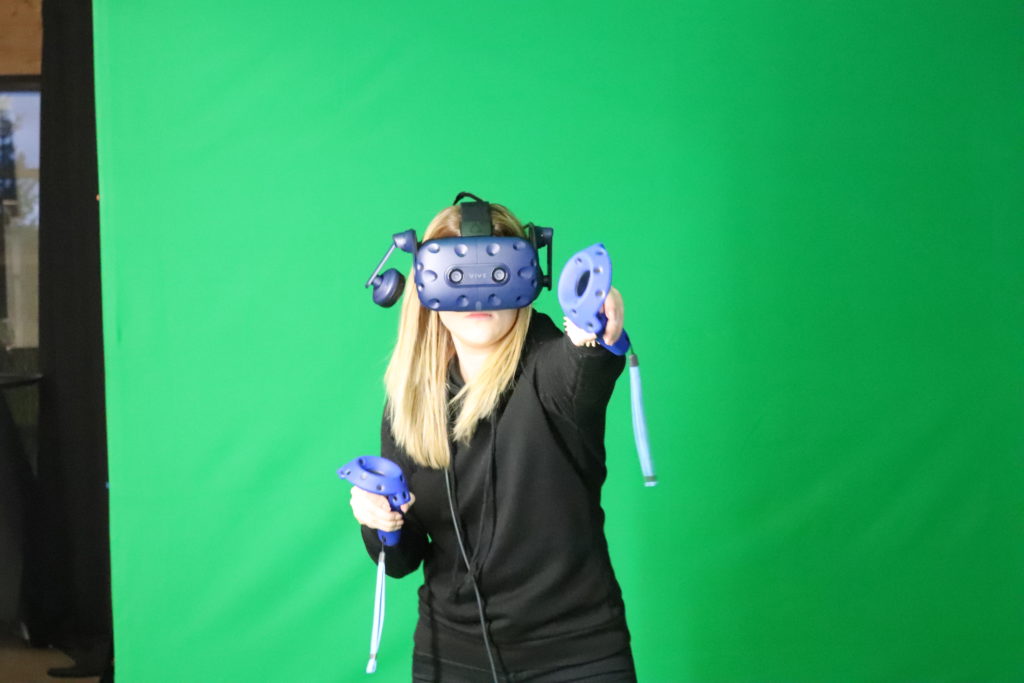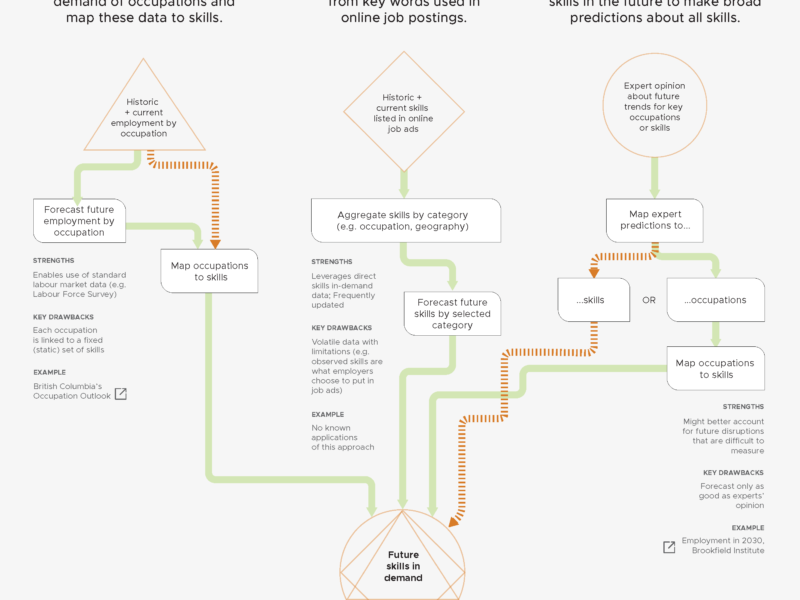Project Insights Report
Virtual Workplace Tours
 Executive Summary
Executive Summary
Employers in the Greater Moncton region report challenges in finding and cultivating skilled workers, a situation that may worsen in the face of anticipated retirements and slowing population growth. Young people may fill this employment gap if they are aware of the career opportunities available in the region.To address this issue, the 3+ Economic Development Corporation (now named the Southeast Regional Service Commission) initiated a project using virtual workplace tours to introduce high school students to potential careers in high-priority sectors. It also provided businesses with the opportunity to promote their sectors. The project included creating videos of these sectors, creating a speakers’ bureau and purchasing virtual reality headsets programmed with 15 different career experiences.
Over two years, the project team coordinated 14 virtual tours in both French and English. The tours were attended by 4,975 students from 33 English and 166 francophone classrooms. The team laid the groundwork for the speakers’ bureau by developing a website and lining up 20 English speakers. While it is too early to assess the impact of the tours on students’ career choices, an evaluation indicated it was a useful resource to showcase a range of options available to the students.
Key Insights
Through 14 virtual tours of businesses in priority sectors, given over two years, 4,975 students from 33 English and 166 francophone classrooms were able to learn about career opportunities in their region.
Aligning tours with curriculum objectives and coordinating with school boards and teachers on timing may improve school participation and overall outcomes.
While virtual tours can reach more students and include more businesses, they are more costly to organize than in-person tours and do not allow direct engagement between students and employers.
 The Issue
The Issue
Employers in the Greater Moncton and Southeast Region of New Brunswick report challenges in recruiting and retaining skilled workers. They also face a looming labour shortage due to forecasted retirements and insufficient population growth to keep up with demand. Estimates suggest that 7,000 new workers will be needed in the Greater Moncton area by the late 2020s to replace retiring workers.
Young workers hold potential to fill these roles as they enter the workforce. However, many young people are not aware of the career pathways available in their communities. In addition, the perception that local career options are limited often results in young people leaving for other regions in search of opportunities.
The region has prioritized growth in the following sectors: health innovation, fintech, construction/trades, transportation, retail and tourism, and advanced manufacturing. One economic growth strategy is to facilitate stronger connections and develop a talent pipeline between youth and businesses in these sectors.

 What We Investigated
What We Investigated
The Virtual Workplace Tours project was created by 3+ Economic Development Corporation of Moncton (now named the Southeast Regional Service Commission). The original concept involved live tours, but the virtual tour concept was developed during the pandemic. The purpose was to showcase regional employment opportunities and help students explore different career options. Project activities included:
- virtual tours of selected industry businesses, hosted by students and broadcast via Microsoft Teams or YouTube;
- videos showcasing different sectors, available to watch prior to virtual tours;
- a speakers’ bureau of professionals who visited classrooms to talk about their career paths;
- virtual reality headsets pre-programmed to simulate career experiences, providing experiential learning opportunities.
The tours were delivered to students in both anglophone and francophone school districts. Southeast Labour Market Partnership’s Labour Market Information Group recommended growth sectors. Coordinators chose businesses that represented the following sectors: transportation, construction/trades, health innovation, postsecondary education, IT, retail and tourism, advanced manufacturing and fintech. All videos were posted to a YouTube channel.
The goals were for students to learn about other career options in the region, for businesses to promote their industry to a pipeline of future talent, and for connections to be made between companies and young people.
The long-term aims were to encourage young people to remain in the region by pursuing relevant education and training, and for businesses to employ qualified workers from the region.
 What We’re Learning
What We’re Learning
This project facilitated 14 virtual tours, with 4,975 students participating from 33 English and 166 francophone classrooms. A project evaluation comprised interviews with seven people. Among those seven were student hosts, school board liaisons and participating students.
It was too early to determine the project’s impact on career decision-making. However, all agreed that the tours were a useful resource in exposing students to sectors and opportunities they weren’t aware of. One outcome may be that students’ decision-making will be better informed. The team hired a production company to produce sector videos and run the virtual tours. While this approach was costly and time-consuming, the tours enabled a much wider reach, including rural students and more diverse businesses.
The following two key recommendations may enhance future delivery:
Align with school curriculum and schedules
The project had greater engagement with the francophone school district, which represented 83% of participating classes. The likely reason was that the francophone curriculum had learning objectives that aligned with the goals of the virtual tours. Timing the tours was a challenge. For instance, science teachers were more open to using class time for health innovation tours than for industries less relevant to their subject. Working more closely with school boards and teachers on curriculum alignment and timing could improve engagement.
Use student hosts
Student hosts, who were on site during the virtual tours, acted as liaisons with the students watching from their classrooms. Hosts were prepared with scripts and potential follow-up questions. In the evaluation, having student hosts was described as a best practice for student engagement.
 Why It Matters
Why It Matters
Exposing students to careers in growth sectors they may not have considered is relevant across the country. Virtual tours have advantages over in-person tours. They reduce logistical effort, expand the participation of both students and businesses, and increase reach.
However, virtual tours have high up-front costs, and they do not enable direct engagement between students and employers. The multi-faceted approach of this project, which also included a speakers’ bureau and virtual reality career simulation in 15 industries, was not fully realized but still holds potential.

State of Skills:
Digital Tools in the Skills Ecosystem
There is considerable promise in the role digital tools and virtual career services can play in improving access to training and career development, particularly for those with geographic barriers or constraints such as family care or other work responsibilities.
Have questions about our work? Do you need access to a report in English or French? Please contact communications@fsc-ccf.ca.
More from FSC
Skills development for innovation and growth: Insights from global initiatives
Scale Learning Lab
How to Cite This Report
Naveed, R. (2025). Project Insights Report: Virtual Workplace Tours 3+ Economic Development Corporation. Toronto: Future Skills Centre. https://fsc-ccf.ca/projects/virtual-workplaces/
Virtual Workplace Tours is funded by the Government of Canada’s Future Skills Program. The opinions and interpretations in this publication are those of the author and do not necessarily reflect those of the Government of Canada.




